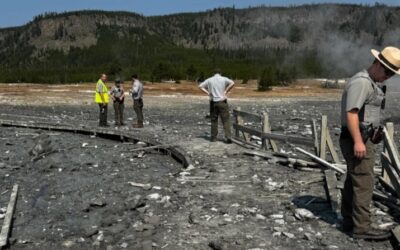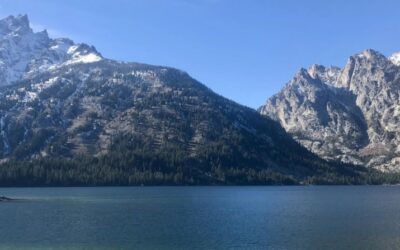This story is part of a collaboration with Rocky Mountain Community Radio focusing on the transition away from fossil fuels across the Mountain West.
Nicole Horseherder is from Black Mesa on the Arizona side of the Navajo Nation. A couple of decades ago, she said her community noticed that their springs and seeps were drying up.
“Well, we know that the mining company on Black Mesa was tapped into one of the deep aquifers and that deep aquifer just so happened to be the only potable source of water for people on Black Mesa,” she said.
That mine pumped the aquifer to slurry coal to the Mojave Generating Station.
Horseherder founded Tó Nizhóní Ániup, which translates to “sacred water speaks” in Dine. Their goal was to close the mine running her community dry. But that wasn’t the only coal-powered plant using water in the region. Just west, the same company ran the Kayenta coal mine, feeding the Navajo Generating Station.
“In order to protect the water and to ensure that it was going to be viable into the future, we had to put an end to the coal mining,” Horseherder said.
The Mojave Generating Station closed in 2005 after officials found it violated the Clean Air Act. So did the mine in Black Mesa. In 2019, the Navajo Generating Station shuttered along with its Kayenta mine. Pressure from environmental groups helped. But the coal-fired plant was also just not as profitable.
The next year, its stacks were demolished.
“Once the Navajo Generating Station shut down, then we were able to turn our efforts more to transition issues,” Horseherder said.
Most important to Horseherder was what to do with the transmission lines left from the Navajo Generating Station.
“We jumped on it right away, because we knew that the window of opportunity is small,” she said.
Those lines transported electricity from the plant to cities outside of the Navajo Nation—like Phoenix and Las Vegas. Horseherder wants the lines used differently by putting renewable energy on those lines, rather than more coal or some other fossil fuel industry.
Jim Day is the CEO of Daybreak. And he has an idea.
“The Navajo Energy Storage Station. It’s a really big project. It’s 2,210 megawatts [and an] installed capacity of 10-hour duration storage,” he said.
In terms of power, that’s bigger than most nuclear power plants. The $3.6 billion project is what’s called pumped storage hydropower. It would store power by pumping water from Lake Powell to a proposed reservoir near Navajo Mountain in Utah.
“So, it uses abundant solar power in the daytime. Pump the water up at huge quantities, and then as the sun starts to go down and power demand goes up and solar starts falling off, it releases the water back through generating turbines,” Day said.
Those turbines can then release power when needed. Day said that storing energy is important when using renewable sources like solar or wind which don’t generate electricity uniformly.
“When the wind is blowing, we could suck it all up,” Day said. “When the sun is blazing high, we can take a lot of that power off their hands and then deliver it when the grid needs it.”
It’s still extremely early days for the project but Day said it has the chance at providing thousands of jobs and millions in revenue. He also said he has brought the idea to the Navajo Nation.
“Right from the start, I want them to be partners,” he said. “That’s the whole point of this project is to benefit them.”
Mike Eisenfeld of the San Juan Citizens Alliance advocates for a transition to renewable energy in the region. He’s seen several pump storage projects proposed. But he has questions.
“Where’s the power going? Who benefits? Is it going to be for the Navajo Nation? Is it going to provide power for local communities? Or is it going to be something that is sort of set up for California?” he said.
It was common for those on the Navajo Nation to be in view of power plants like the Navajo Generating Station but have no electricity in their homes.
“What about the projects that could stand on their own merits? Why do we keep investing in these speculative projects when we know that we could be building renewable energy projects that would have a meaningful impact on local communities?” Eisenfeld said.
For Horseherder, she hopes a transition from fossil fuels also changes how business is done.
“There has to be a change in the way that corporations and utilities do business anywhere in this nation, in any community,” she said.
She also said she thinks that whatever replaces coal should help those closest to it. And communities should hold some power in how they generate power.





